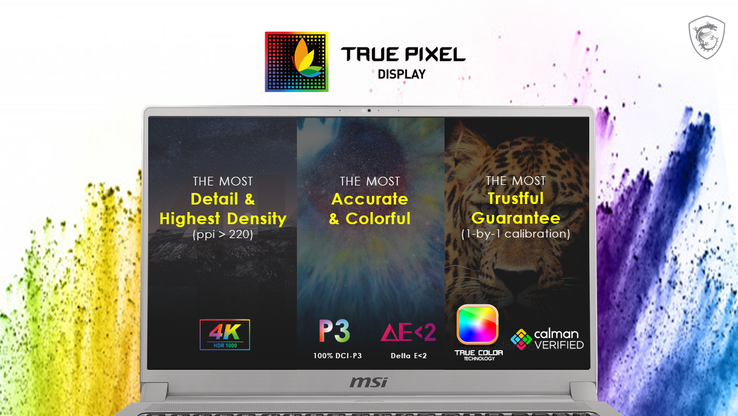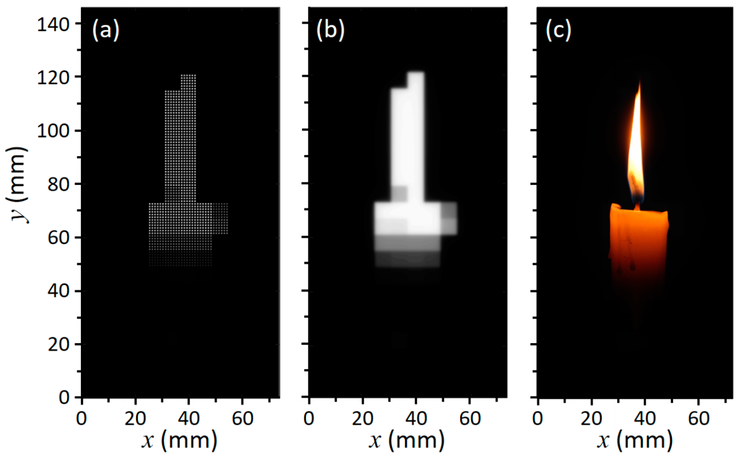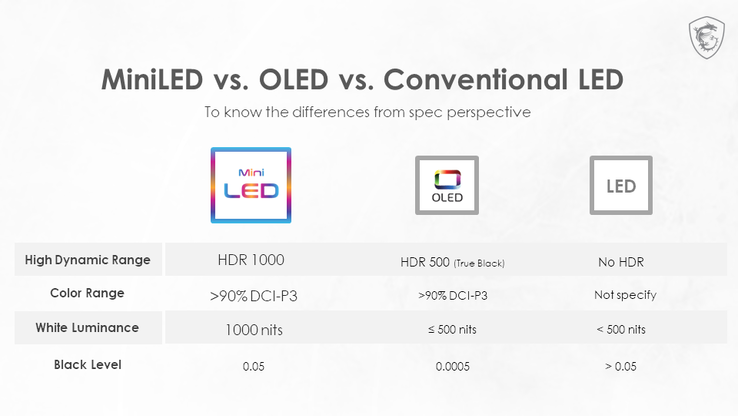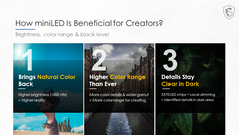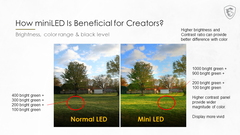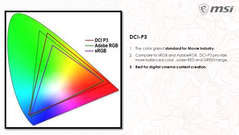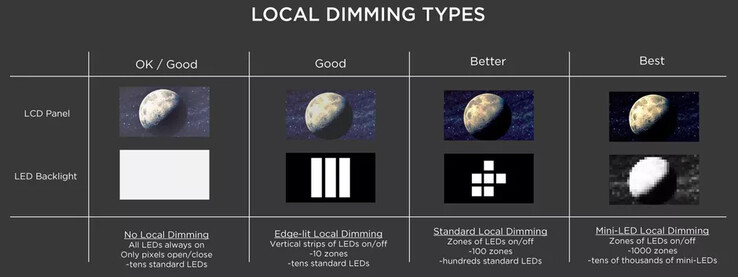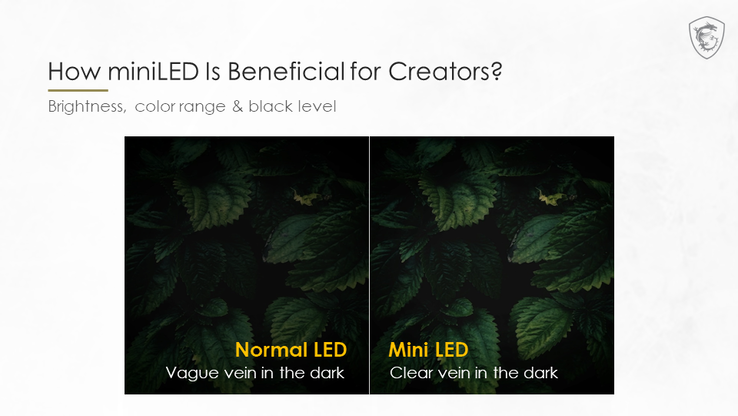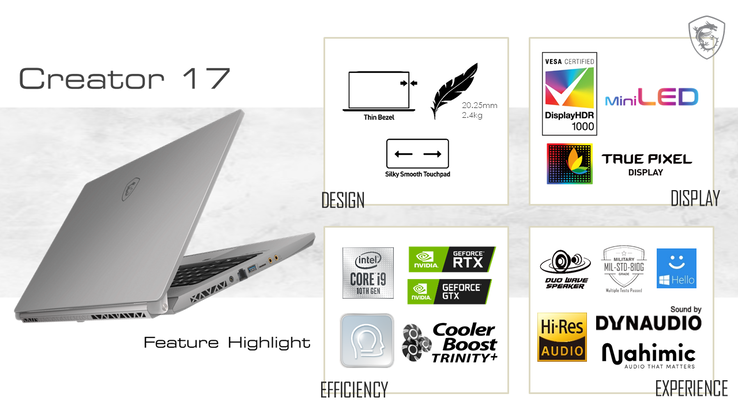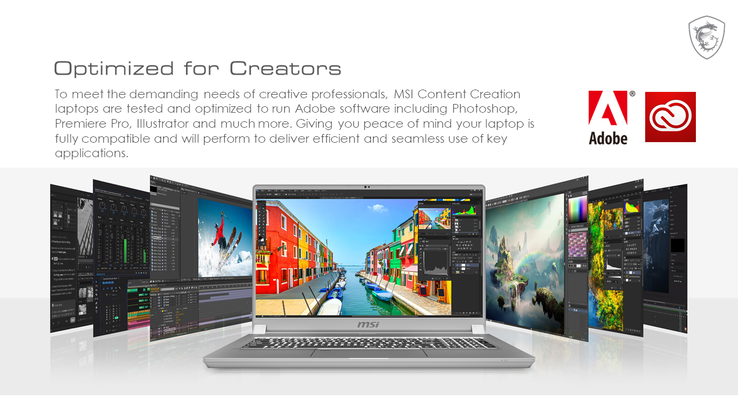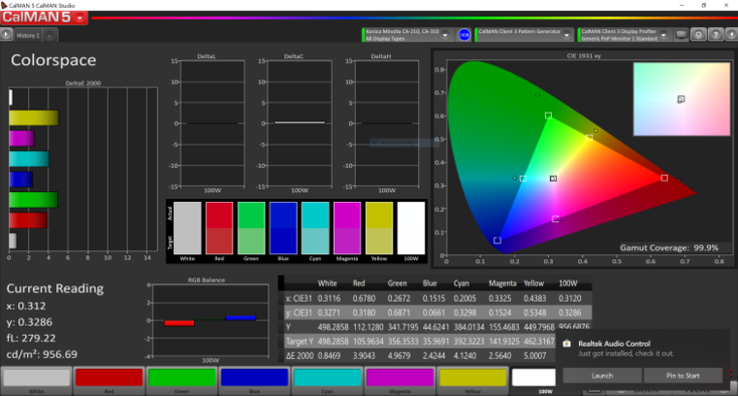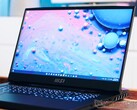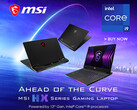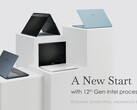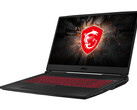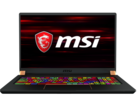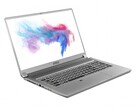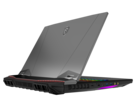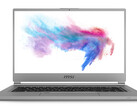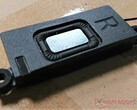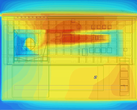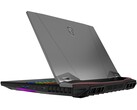How mini-LED displays benefit content creators: A look at the MSI Creator 17 — the world's first laptop with a mini-LED display
Introduction
Previously, we have discussed in detail about what goes into selecting an ideal laptop display for gamers and content creators. Panel technology has been evolving at a much slower pace compared to other hardware such as GPUs. In fact, we still find many gaming laptops preferring to use traditional twisted nematic (TN) panels. It is only recently that we have started to see organic light emitting diodes (OLEDs) being implemented in laptops.
However, OLED, with all its benefits of high brightness and deepest possible blacks, is not without competition. New display technologies such as micro-LED and mini-LED are coming to rival OLED in terms of both cost and performance. While micro-LED is also a self-emitting technology similar to OLED, it has a niche use-case for now and is prohibitively expensive.
This is where mini-LED comes in. Mini-LED can be considered as the next step technology between the traditional LCD and micro-LED with features that are comparable or even better than OLED in many aspects. With several devices set to transition to mini-LED displays in the coming years, we will look at how this new display technology can benefit users, especially content creators.
We will also talk about the MSI Creator 17, which is the first mini-LED laptop on the market, and we will take a look at its display prowess that won it the "Digital Imaging or Photography" award at CES 2020.
What is a mini-LED display?
Traditional liquid crystal displays (LCDs) use LED backlighting to light-up pixels either from behind or from the screen edges. The LEDs used in conventional displays are about 1000 microns in size in average. Therefore, only several hundred (~400 LEDs in 15.6-inches) can be accommodated in a typical laptop display. The larger the LED size the more is the area of the panel that is occupied per LED. This poses problems with local dimming, slow response times, and poor energy efficiency. Though modern LED displays have improved on these aspects, they still don't match self-emissive OLEDs in terms of viewing angles, contrast, brightness, or black levels.
Although OLED panels have been around for quite some time, their adoption is yet to gain considerable ground outside of smartphone displays, owing to limitations in producing large OLED panels, gradual loss of luminance over time, and lower power efficiency at higher brightness to name a few. Mini-LEDs aim to overcome some of these limitations and offer a good compromise between conventional LEDs and OLEDs.
Mini-LED displays are similar to conventional LED ones in that they still use a backlight as a source of brightness. However, a mini-LED display uses miniature LEDs that are about 100 to 200 microns in size. This allows panel makers to cram thousands of them into the display as opposed to just hundreds in conventional LED backlit panels. The primary advantage of this approach is that the backlight zones are now much smaller, which enables better control over contrast, brightness, and color with blacks approaching near-OLED levels. The increased number of backlight zones also means better local dimming, which is a requirement for true HDR output.
Mini-LED advantages for content creators
Mini-LEDs offer clear advantages over OLEDs in terms of peak brightness and higher dynamic range while offering excellent color-gamut coverage and deep blacks not possible with conventional LCDs. Although OLED panels in modern laptops do offer an edge in terms of response times, they aren't actually that beneficial when it comes to brightness and color accuracy.
Content creators stand to gain three primary advantages by using laptops equipped with mini-LED displays such as the MSI Creator 17.
- High brightness — With brightness levels up to 1,000 nits, content creators can uncover and work on more details in their content.
- Higher color range — Mini-LED displays can offer excellent coverage across the sRGB, Adobe RGB, and DCI-P3 color spaces. This allows better resolution of color shades and offers much improved color accuracy. DCI-P3 is the preferred color gamut for digital cinema.
- More details in the dark — Enhanced local dimming thanks to a staggering 5760-mLED array ensures highly resolved dark areas.
As mentioned above, mini-LEDs offer much better local dimming than conventional LEDs. Though mini-LEDs do not turn off on a per-pixel basis like OLEDs do, they offer enough local dimming so as to display excellent HDR images. Mini-LEDs, essentially being LEDs, can boost up to very high peak brightness levels (up to 1,000 nits) simply by adjusting the backlight intensity whereas self-illuminating OLEDs are usually limited to around 500 nits.
From the image below, we see that the higher number of local dimming zones in a mini-LED display help in offering excellent contrast, which enables a vibrant reproduction of the earth and the space background compared to always-on LED backlighting. In the second image, we also see much better resolution of leaf veins in the darker areas.
MSI Creator 17 — The world's first mini-LED display laptop
The MSI Creator 17 is tailor-made to handle the needs of demanding content creators. The Creator 17 is not only powerful under the hood but is also built to impress with its Space Gray aluminum finish with a sandblasted texture and an elegant silver diamond-cut finish. The Creator 17 is powered by a choice of the latest 10th gen Intel Core i7 and Core i9 processors that offer significantly better performance than the 9th gen chips. Weighing just 2.5 kg and featuring an 82 Wh battery, the Creator 17 is built for unhindered creativity on the move. It is also MIL-STD-810G-certified, so you can focus on your next masterpiece instead of having to worry about reliability under tough working conditions.
The main unique selling point of the Creator 17, however, is the display. The MSI Creator 17 is the world's first laptop to feature a mini-LED display option. With a 17.3-inch 4K 60 Hz 1180-nit IPS-level mini-LED panel that supports HDR1000 and 100% DCI-P3 color-gamut coverage, the Creator 17 offers a never-before seen view to help you create your finest masterpieces. Powering this excellent display is a choice of several NVIDIA RTX GPUs ranging from the GeForce RTX 2060 all the way to the RTX 2080 Super Max-Q. With many creative apps increasingly making use of the GPU for hardware acceleration in photo and video-editing, 3D rendering, and modeling, the Creator 17 ensures that you get a smooth and responsive experience no matter your creative workflow.
The benefits of transitioning to a mini-LED panel in the Creator 17 can be seen from the various display test measurements below.
We also see brightness levels approaching the 1000-nit mark with an excellent distribution of 93%, which indicates a fairly evenly illuminated panel. The calibrated DeltaE values are also in the advertised range of about 2. With a 97% sRGB and 84% Adobe RGB coverage, the MSI Creator 17 offers vivid and accurate color reproduction. According to MSI, the Creator 17's display covers 99.9% of the DCI-P3 color gamut making it an ideal choice for those working on digital cinema.
Switching over to the HDR mode, we see significant improvements in our display measurements. Though the brightness value takes a hit, the black levels seem to be very close to an OLED at just 0.07. We also see increased coverage of the Adobe RGB (94%) and sRGB (99%) coverage in HDR mode.
All these measurements indicate that creative professionals will be thoroughly served with the Creator 17's mini-LED display, enabling them to work in greater detail than ever before.
Availability
The MSI Creator 17 is now available across major retailers and e-tailers worldwide. More information about the Creator 17 is available on the MSI website.




